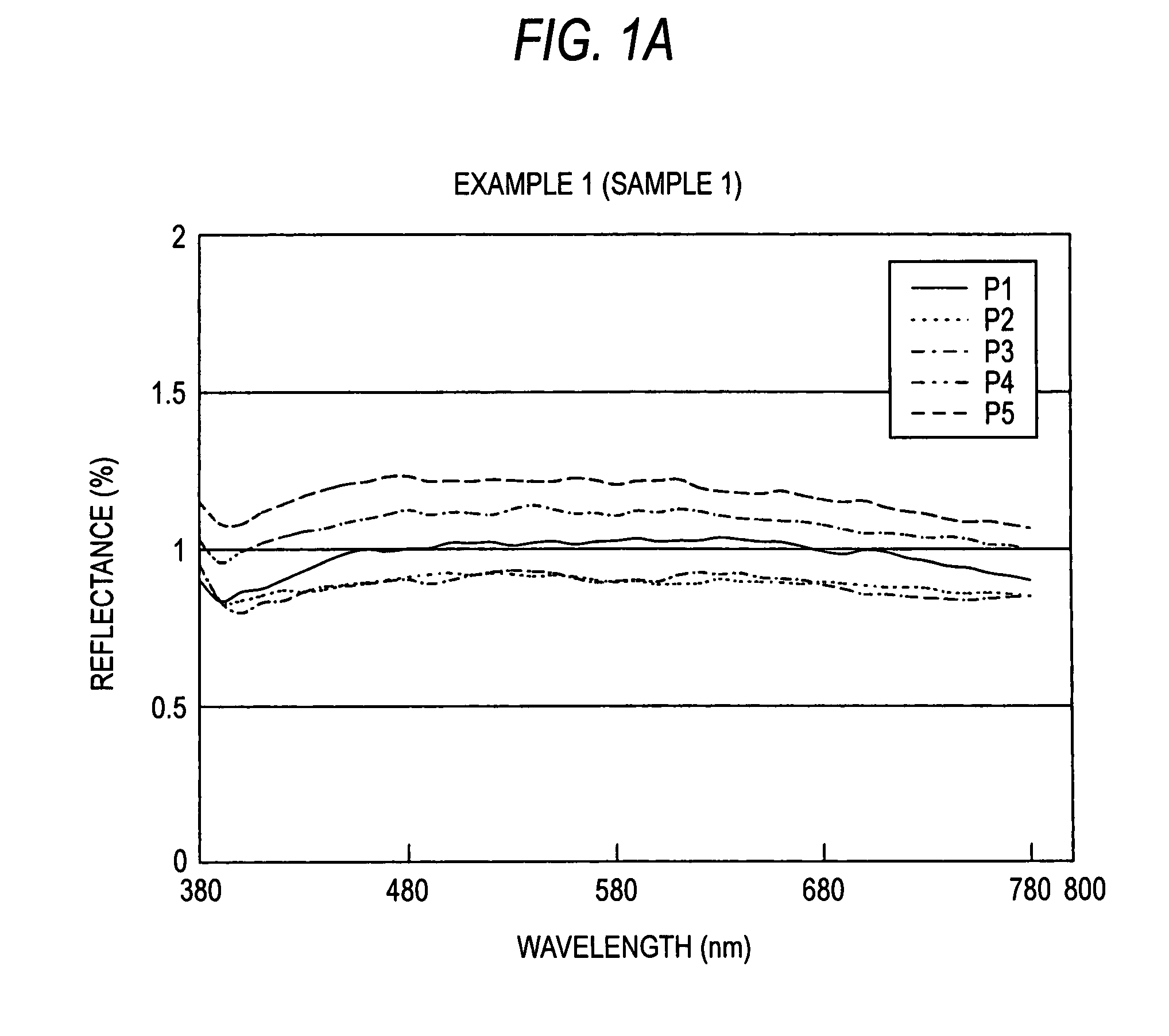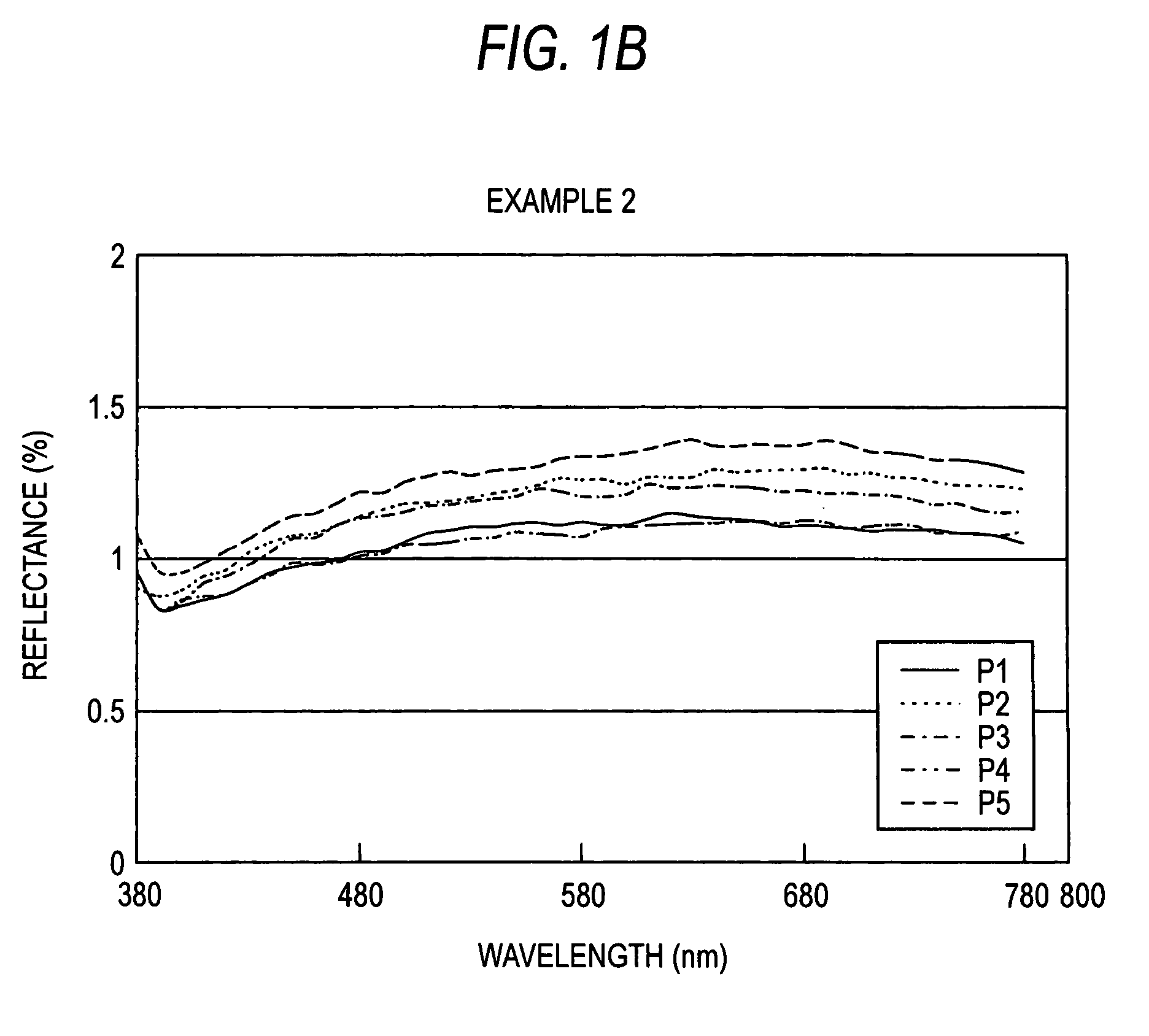Ceramic optical parts and production methods thereof
a technology of ceramic optical parts and production methods, which is applied in the direction of ceramicware, domestic applications, other domestic objects, etc., can solve the problems of high uniformity and high accuracy, increase the cost, and achieve high uniformity, high accuracy, and small reflection
- Summary
- Abstract
- Description
- Claims
- Application Information
AI Technical Summary
Benefits of technology
Problems solved by technology
Method used
Image
Examples
##ventive example 1
Inventive Example 1
[0037]Blending weight ratios of the used raw material powders (compositions of mixed powders) are shown in Table 1. As the component which accelerates blackening, 15 wt % Fe2O3 was added to silicon powder. In the same manner, WB, B4C, MoO3, Fe3O4, Ta2O5, ZrO2 or Cr2O3 was added at the aforementioned ratio. Each of these raw materials was weighed, mixed with 1.5 times in total powder weight of distilled water and a polyvinyl alcohol aqueous solution, mixed using a ball mill for about 6 hours to make a slurry and then subjected to spray drying to prepare granulated powder. Next, the granulated powder was put into a die of 20×80 mm in inner dimension, preformed under a pressure of 8.3 MPa, put into a nylon bag and then sealed therein by reducing the inside pressure.
[0038]
TABLE 1Sample No.SiFe2O3WBB4CMoO3Fe3O4Ta2O5ZrO2Cr2O31851528515385154851558515685157851588515
[0039]This was pressurized using CIP under a pressure of 200 MPa to obtain a formed body. Subsequently, thi...
##ventive example 2
Inventive Example 2
[0040]Silicon carbide and carbon were weighed at a weight ratio of 6:4, and 15% Fe2O3 was added thereto. These weighed powders were mixed with 1.5 times in total powder weight of alcohol and a polyvinylbutyral alcohol solution, mixed using a ball until for about 6 hours to make a slurry and then subjected to spray drying to prepare granulated powder. Next, the granulated powder was put into a die of 20×80 mm in inner dimension, preformed under a pressure of 8.3 MPa, put into a nylon bag and then sealed therein by reducing the inside pressure.
[0041]This was pressurized using CIP under a pressure of 200 MPa to obtain a formed body. Subsequently, the thus obtained formed body was put into a crucible of boron nitride spread with silicon, and then heated to 1,500° C. in an atmosphere of Ar under 0.1 MPa to carry out its reaction sintering. After the reaction sintering measurement of reflectance on the sample surface at the visible light region was carried out. Namely, ...
##ventive example 3
Inventive Example 3
[0042]As the components which accelerate blackening, 2% MoO3, 2% Fe2O3 and 2% Cr2O3 were added to respective raw materials alumina and zirconia, and these raw materials were weighed, mixed with 1.5 times in total powder weight of distilled water and a polyvinylalcohol aqueous solution, mixed using a ball mill for about 6 hours to make a slurry and then subjected to spray drying to prepare granulated powder.
[0043]Next, the granulated powder was put into a die of 20×80 mm in inner dimension, preformed under a pressure of 8.3 MPa, put into a nylon bag and then sealed therein by reducing the inside pressure. This was pressurized using a CIP device under a pressure of 200 MPa to obtain a formed body. Subsequently, the thus obtained formed body was subjected to a degreasing treatment by heating it to 550° C. in an atmosphere of N2 under 0.2 MPa, and then to a reaction sintering at 1,250° C. for 1 hour in an atmosphere of N2 under 0.1 MPa. After the sintering, measuremen...
PUM
| Property | Measurement | Unit |
|---|---|---|
| porosity | aaaaa | aaaaa |
| reflectance | aaaaa | aaaaa |
| reflectance | aaaaa | aaaaa |
Abstract
Description
Claims
Application Information
 Login to View More
Login to View More - R&D
- Intellectual Property
- Life Sciences
- Materials
- Tech Scout
- Unparalleled Data Quality
- Higher Quality Content
- 60% Fewer Hallucinations
Browse by: Latest US Patents, China's latest patents, Technical Efficacy Thesaurus, Application Domain, Technology Topic, Popular Technical Reports.
© 2025 PatSnap. All rights reserved.Legal|Privacy policy|Modern Slavery Act Transparency Statement|Sitemap|About US| Contact US: help@patsnap.com



